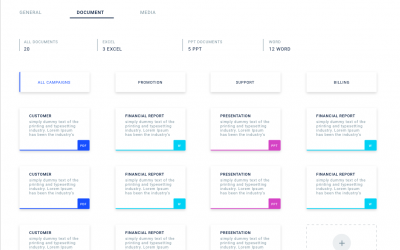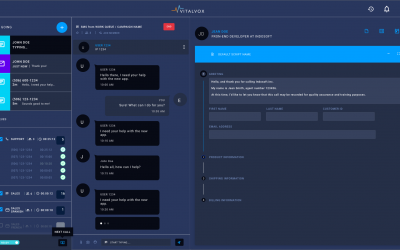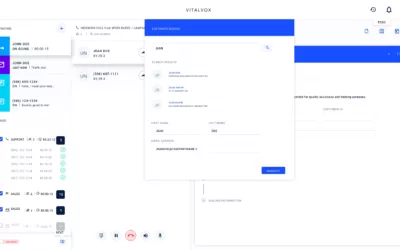In today’s fast-paced business environment, logistics and operations demand agility, accuracy, and efficiency. Fortunately, transforming logistics with software solutions has emerged as a powerful approach to optimizing logistics, streamlining operations, and delivering exceptional outcomes. This case study explores a real-world success story of a logistics company that significantly improved its operations through customized software. In particular, it provides insights into the processes, challenges, and measurable improvements that tailored software can offer.
Challenges Before Transforming Logistics with Software Solutions
The logistics company, operating nationally, faced various operational challenges common in the logistics sector. To begin with, they struggled with:
- Complex Inventory Management: The company needed to track inventory in real-time across multiple locations, frequently facing errors and data silos that slowed operations.
- Inefficient Route Planning: Frequent delivery delays and suboptimal route planning led to missed deadlines and high operational costs, which they wanted to reduce.
- Inconsistent Communication Channels: With numerous stakeholders across the supply chain, maintaining clear and consistent communication was often a challenge.
- High Error Rates in Order Fulfillment: Lastly, manual processes and outdated systems led to increased error rates, which ultimately affected customer satisfaction.
Therefore, to tackle these challenges, the company decided to implement a tailored solution specifically aimed at transforming logistics with software solutions that addressed the specific needs of logistics and operations.
Solution Development Process for Transforming Logistics with Software Solutions
First and foremost, understanding the client’s pain points was a critical step. Consequently, a dedicated team conducted a series of assessments and workshops to capture the details of the company’s daily operations and specific needs. Then, the solution development process unfolded in the following stages:
- Requirement Gathering and Analysis
The team began by conducting detailed interviews and data analysis to create a complete picture of the company’s logistics processes. Clearly understanding these needs allowed the software developers to outline essential functionalities like real-time tracking, automated routing, and improved communication channels. - Custom Software Design
Based on the insights, a customized solution architecture was designed, including modular elements that could be adjusted as the company’s logistics needs evolved. Key features such as an interactive dashboard for tracking deliveries, real-time inventory updates, and seamless integration with existing systems were prioritized. - Development and Integration
Next, the development team implemented essential functionalities, testing the system to ensure compatibility with existing data structures. Integrating data across various stages of the logistics process, from order management to customer delivery, was a major focus. This integration provided a unified view of logistics operations for the first time. - Testing and Feedback
After implementing core features, an initial testing phase allowed the company’s team to interact with the software and provide feedback. Importantly, this iterative feedback loop helped refine key functionalities, aligning the software with real-world logistics needs. - Training and Deployment
Finally, training was essential to ensure a smooth transition. Therefore, staff received comprehensive tutorials on using the system, understanding key features, and troubleshooting common issues. Once training was completed, the software went live across the company’s operations.
Key Benefits of Transforming Logistics with Software Solutions
The implementation of tailored software led to significant improvements, impacting every aspect of the company’s logistics and operations. Specifically, it resulted in:
1. Enhanced Inventory Tracking
With real-time tracking, the company could monitor inventory levels accurately at all times. This improvement not only eliminated the previous issues of data silos but also allowed all teams to access updated inventory information across all warehouses.
2. Improved Route Optimization
The software utilized predictive analytics to create efficient delivery routes, considering factors like weather, traffic, and delivery windows. As a result, the company reduced fuel costs and delivery times by an impressive 30%, while customer satisfaction also increased due to more reliable delivery schedules.
3. Streamlined Communication Across Channels
By integrating communication channels, the software enabled seamless information sharing between departments and stakeholders. Consequently, employees could now track each delivery’s status and collaborate in real-time, reducing misunderstandings and improving response times.
4. Reduced Error Rates in Order Fulfillment
Automation helped minimize human error in order processing and fulfillment. The software flagged discrepancies immediately, enabling the team to rectify issues before they affected customers. Consequently, this change contributed to a 25% reduction in error rates and a significant boost in customer satisfaction.
Quantifiable Results After Transforming Logistics with Software Solutions
Overall, the logistics company’s transformation through tailored software led to impressive metrics, including:
- 30% Reduction in Delivery Times: Efficient route planning and real-time tracking contributed to faster delivery schedules.
- 25% Decrease in Operational Costs: Automation and route optimization reduced resource consumption and operational expenses.
- 35% Increase in Customer Satisfaction: Accurate, timely deliveries and fewer order issues improved the customer experience.
- 20% Reduction in Error Rates: Real-time inventory tracking and automated order processing minimized human errors.
Lessons Learned and Future Outlook for Transforming Logistics with Software Solutions
This case study illustrates how transforming logistics with software solutions can significantly impact logistics and operations. The key takeaways include:
- The Importance of Customization: Off-the-shelf software often falls short in meeting the unique requirements of logistics companies. As a result, customized solutions address specific needs more effectively.
- Iterative Feedback and Testing: Involving team members in the feedback process ensures the software aligns with actual workflows and helps identify potential issues early on.
- Ongoing Training and Support: Training staff ensures smoother adoption and maximizes the software’s impact on operations.
Looking ahead, the company plans to expand the software’s capabilities with predictive analytics for demand forecasting and further automation in warehouse operations. As these enhancements unfold, they will continue to drive efficiency and deliver value to both the business and its customers.
Contact Us for Tailored Solutions
At Indosoft, we specialize in crafting software solutions that drive operational excellence. From real-time tracking to process automation, our tailored software solutions address your specific needs in logistics and operations. Ready to elevate your logistics performance? Contact us today to discuss your unique challenges and discover how we can help you achieve measurable improvements.



